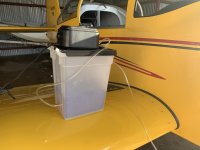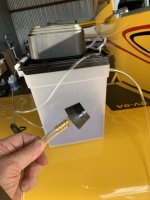So this year I finally got a cell wi-fi switch so I can turn on (or off) the pre-heater from home.
I've typically been switching it on the night before I want to fly. This weekend it was my intention to fly Sunday morning, but the morning fog lasted longer than forecast so I wasn't able to fly as planned. I've always read it's bad to leave sump heaters on full time; so my question is: is it better to turn my heater off or leave it on until I'm able to fly. I'm typically limited to flying on weekends during pre-heat season with my work schedule and available daylight, so it's likely at least a week and sometimes two or even 3 if the weather works against me. the heater is a 150 watt sump pad and the cowl is covered by full wraparound insulated cowl blanket.
In the past I've always just let the heater go until I was able to fly out of convenience and not wanting to drive out when I couldn't fly but now I could easily turn it off if that's somehow better for the engine.
What are your opinions?
(in this situation I was able to sneak out for a sunset flight with my boy yesterday afternoon so it's not on but thought I'd still ask for next time)
I've typically been switching it on the night before I want to fly. This weekend it was my intention to fly Sunday morning, but the morning fog lasted longer than forecast so I wasn't able to fly as planned. I've always read it's bad to leave sump heaters on full time; so my question is: is it better to turn my heater off or leave it on until I'm able to fly. I'm typically limited to flying on weekends during pre-heat season with my work schedule and available daylight, so it's likely at least a week and sometimes two or even 3 if the weather works against me. the heater is a 150 watt sump pad and the cowl is covered by full wraparound insulated cowl blanket.
In the past I've always just let the heater go until I was able to fly out of convenience and not wanting to drive out when I couldn't fly but now I could easily turn it off if that's somehow better for the engine.
What are your opinions?
(in this situation I was able to sneak out for a sunset flight with my boy yesterday afternoon so it's not on but thought I'd still ask for next time)






